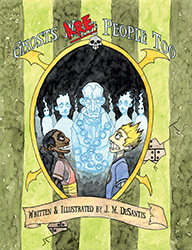Borne from the Soul: Demon’s Souls

It was my brother, Brian, who first introduced me to the Souls series. As I recall, I was going through a difficult time and Brian was looking for difficult games. We had been gamers our entire lives and he decided that he only wanted to play games that offered him the utmost challenge, so experienced did he consider himself. So, like a samurai choosing to fight armies with a wood sword, every game he played was on the highest difficulty, and he hated having to play a game once on Hard just to get the even harder difficulty. And then he found it, a game so hard the only difficulty setting was constant death. And when he found it, my dear brother wanted me to revel in his new-found outlet for his masochism.
The truth is I hated Demon’s Souls when I first played it. Not initially, but I grew to hate it. Though it was a wonderfully dark, complex, and intriguing game, it was so difficult, so unorthodox that the game progressively felt more and more like a grind (and I hate grinding in games). I recall one night when I was trying to fight my way to King Allant and to beat him (often the last boss players choose to fight) that I called up my brother to say: “just tell me how to beat this fucking boss so that I can finish this game!” Yet even despite this feeling, despite the frustration and the grind, he encouraged me to go on, and when I finished the game, I started a new game plus.
Am I a glutton for punishment? Perhaps. But Demon’s Souls (the spiritual predecessor to Dark Soulsbefore Dark Souls was even an idea in Hidetaka Miyazaki’s mind) had the trademark formula of the Soulsborne series. You fought, you died, you learned, and if you had the courage and determination, you got back up and tried again–and most importantly, you felt rewarded for your efforts. And of course, there was the lore, though Demon’s Souls’s lore is presented much more straightforward than Dark Souls’–for the most part. But it’s important to note that Demon’s Souls was not Dark Souls, and there were some things it did differently and even better than its more popular successor.
For one, of all the games I’ve ever played, Demon’s Souls was the best at creating a consistent mood throughout. The sense of loneliness and depression was so intense in Demon’s Souls as to almost be crushing. From the music, to the decaying landscapes to the NPCs and their echoing voices, Demon’s Souls felt like a descent into utter despair. You were all alone in this corrupted world, and the few people whom you met were barely holding on to any hope of relief. This was something absent from the other Soulsborne games, and it makes Demon’s Souls stand out.
The game also has some of the most memorable moments, characters, and places of any Soulsborne games. The ambiguous Yurt was as much a favorite of mine as Dark Souls’s Lautrec, and he posed much more of a threat to the player as he would slowly take out every NPC in the Nexus if the player didn’t tend to him first (opening up the possibility for a hidden side quest, I might add). The Maiden in Black still stands as the most memorable of all the Soulsborne NPCs who level you up, as does her speech to the Slayer of Demon’s.
Memorable were many of the boss fights, including all three in the Shrine of Storms (each quite unique, as were their bosses) and the Dragon God of Stonefang Tunnel. And still to this day, the Valley of Defilement is more intimidating than Dark Souls’s Blighttown. And its final boss, the Maiden Astrea, was in many ways a superior precursor to Artorias–in that here was a legendary figure whose true nature it was up to the player to interpret and decide. Then there’s the haunting Tower of Latria, more horrifying than anything Bloodborne had to offer. It still stands as my favourite area of any Soulsborne game.
As for the difficulty, it was so much greater than the games which after came. The mechanics of Demon’s Souls were slow, ponderous, and unforgiving. Add to this your tendency to float like a ghost in Soul Form (Demon’s Souls’sversion of “hollowing”) and simple navigation had its added challenges, especially when walking along a precarious ledge.
Absent were the many bonfires (or lamps, in Bloodborne’s case) to act as checkpoints throughout a level. In Demon’s Souls you had to proceed from one archstone, through a level and defeat its boss, just to reveal the next archstone. Sure, there were the trademark shortcuts of the Soulsborne series which would allow you to move more quickly through certain areas of the game, but there was so much more riding on your death when so much ground had to be covered just to reach a boss. This and so many more reasons are why Demon’s Souls players felt that the Dark Souls games were watered down in comparison. And in that respect, they were.
Despite my initial feelings toward the game, it holds a soft spot in my heart. Perhaps it was because it was my first of these games, but I honestly feel it was a great game in its own right with many unique aspects absent from the games which followed (such as World Tendency and its effects on the game). I feel disappointed that From Software never made a sequel, or at least offered a DLC wherein players can explore what lies beyond the broken archstone that connected the Nexus to the Land of the Giants.
Perhaps one day. Though if nothing else, Demon’s Souls stands as a fine achievement in game development and offers the greatest challenge to those brave enough to meet its challenges.













